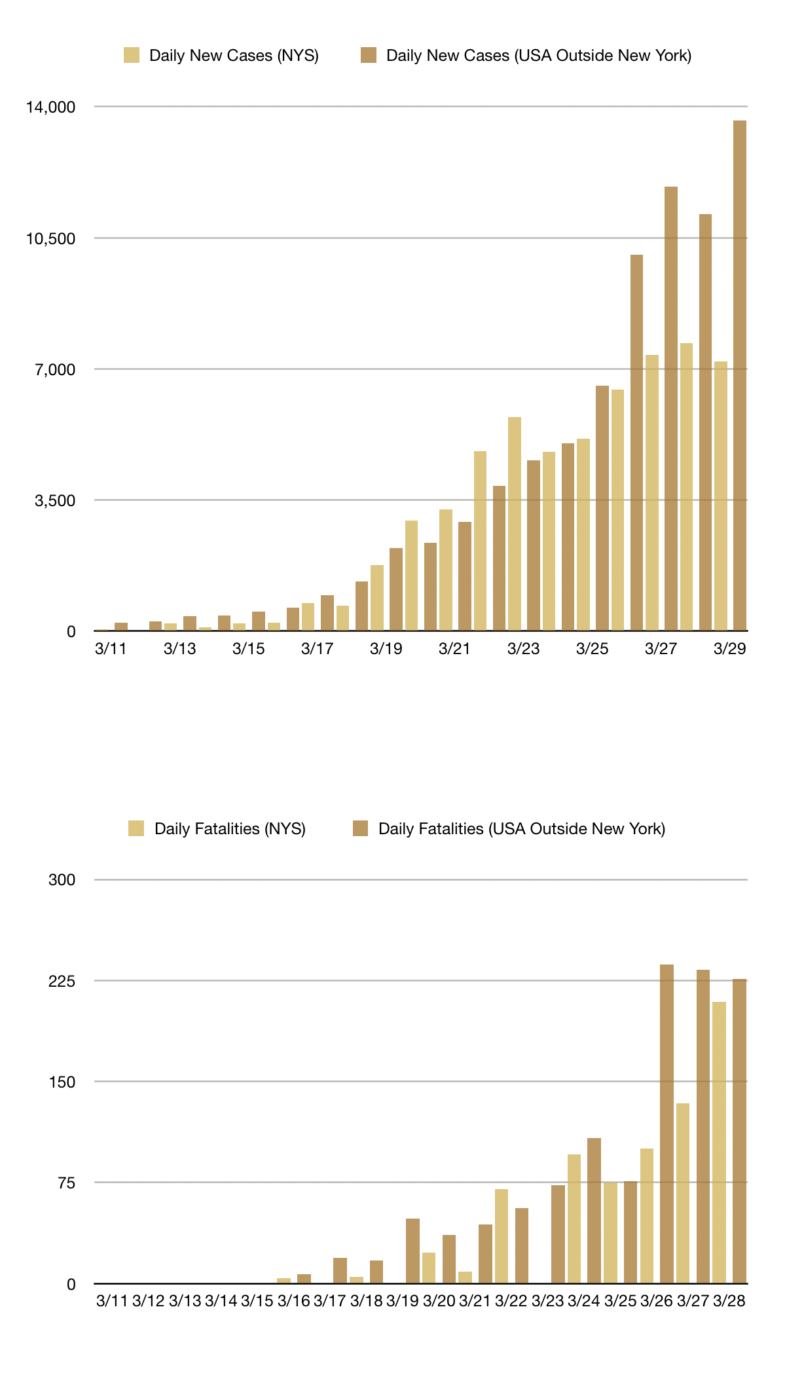Let me note one of the known unknowns we should be thinking about as we roll into the coming brutal weeks. We are looking at national statistics – infections, tests, fatalities, hospitalizations. But these are likely illusory. There really is no national outbreak. There’s a big New York outbreak which still dominates the national statistics and will have its own discrete dynamics. It seems very likely you will have a series of other regional and metropolitan area outbreaks unfolding across the country in the coming weeks. So the national numbers will be misleading. In epidemiological terms the US is more like Europe as a whole, rather than any individual country, especially when states are playing such an outsized role combating the disease because of a significantly distracted federal response.
The big question is whether New York ‘going first’ has given other states time to clampdown and avoid some of the worst of what is now happening in New York. Another question is whether a host of dynamics simply make the outbreak worse here than it will ever be in most parts of the country. A few points. New York is the largest city in the country. It is also by far the densest population center in the country. It also has an extreme reliance on public transport – great in so many other situations but not at all great in this one. It also has a very high rate of international travel transiting through it. All of these make it particularly vulnerable to the pandemic. Whether they all add up to creating a categorically different epidemic reality at least isn’t clear to me.
Another thing to bear in mind is that for all the current horror the New York metropolitan area has one of if not the best hospital systems in the country. This is offset to a degree by such a large population. But in terms of hospital capacity, quality of care, numbers of doctors, in many ways New York is the best case scenario. In rural areas or in states with weaker health care capacity, the outcomes will likely be significantly different.
Here is a graph looking at cases in fatalities in New York State and the rest of the United States excluding New York.
I’ve seen estimates that the ‘peak’ in the US is likely to come in mid-April. It’s hard for me to make sense of those projections. It’s supposed to come roughly around then in New York. But as you can see for now New York is close to half the current ‘national’ outbreak despite the state making up less than 6% of the US population. If you have anything like what is currently happening in New York happen in large sections of the rest of the country these numbers are likely to be dwarfed by what is to come and the peak of infections and fatalities significantly further out into the future.
Again, known unknowns. One of the reasons it’s hard to make sense of these graphs is that testing is not at all evenly spread around the country. The US is no longer clearly behind most countries in testing. The US is approaching a million tests and has been testing about 100,000 people a day since late last week. But the numbers are very unevenly spread around the country.
The one thing to keep in mind is the breadth of the country, the dynamics of its regional metropolitan hubs, the relative quality of hospital capacity in different areas. To understand and prepare for what’s coming we need to be viewing all of this through that prism.






